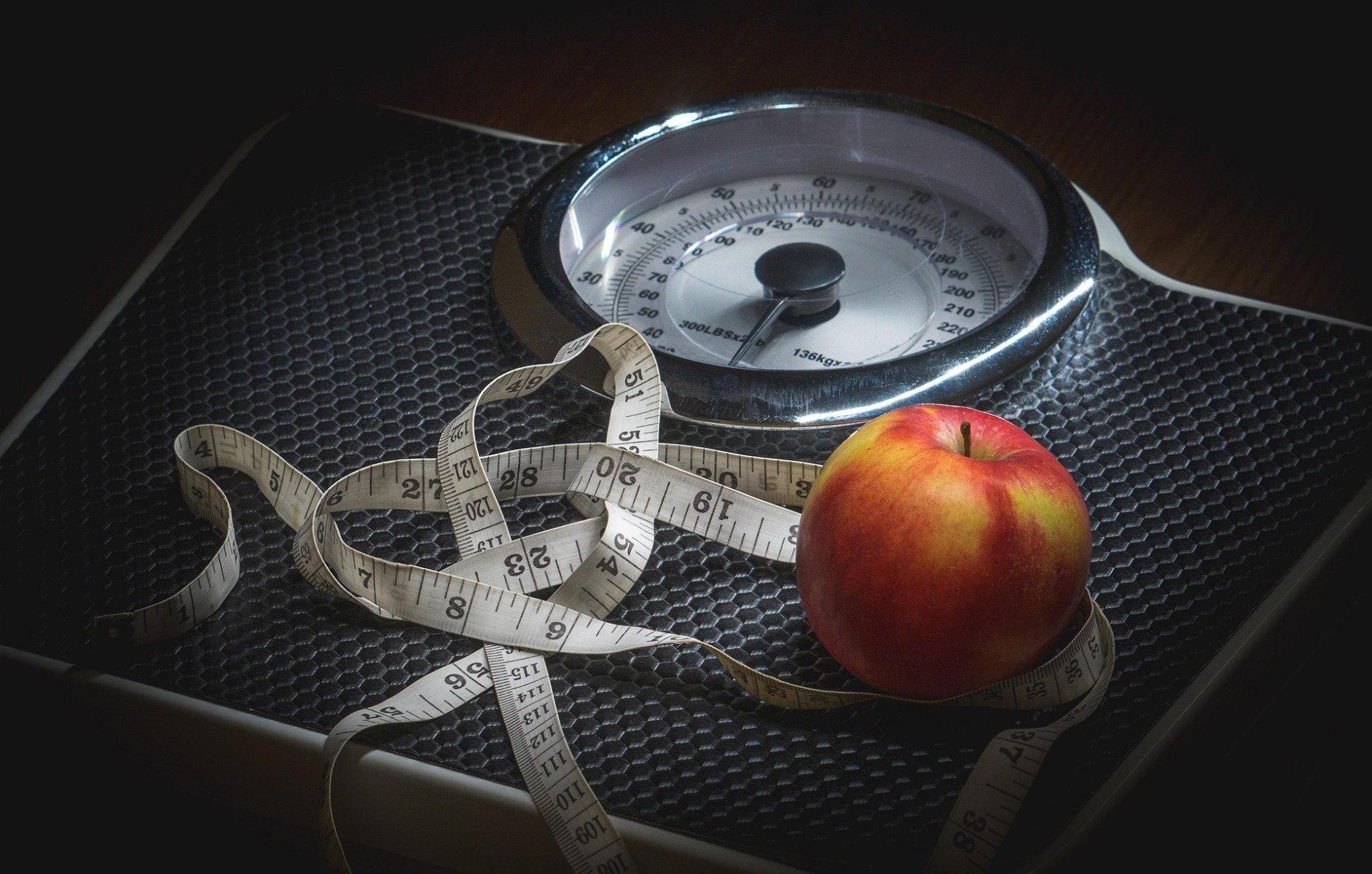Table of Contents
Do you suffer from the unflattering orange look of your skin? Do not worry! Up to 90 % of women in the world suffer from an unpleasant problem called cellulite. In this article, we look at what factors affect formation of cellulite, how to mitigate its consequences, and why it does not only affect women with extra pounds. Let´s go!
What is cellulite?
Cellulite refers to certain transformation of adipose tissue and cells that are caused by lymphatic changes. This phenomen we observe on the body as so-called orange skin. It is due the body´s lack to get rid of excess waste material, toxins and acids. [1] [2]
For this reason, the harmful substances accumulate in fat cells stored under the skin, resulting in the accumulation of their volume. Cells then exert the pressure on skin and cause skin´s surface deformation reminding the orange skin. This process is called lipohypertrophy, which is an excessive accumulation of the volume of adipose tissue. The formation of cellulite is affected by many more factors at which we will have a closer look. [1] [2]

Who suffers from cellulite?
According to researches, up to 90 % of women in the world suffer from cellulite and usually it rised in thighs, sitting muscle and abdomen. [15] The reason why women predominantly suffer from this problem, are largely hormones such as estrogen and various distribution of fat, muscles and connective tissues. Cellulite does not have to affect only women, but in rare cases affects also the group of men who have an excess of estrogen. This is only very little percentage. [1] [3] [4]
Cellulite is classified into four stages according to its severity. Many women consider cellulite as unpleasant aesthetic problem, but it is important to mention that at higher stage cellulite is painful health burden.
Stages of cellulite:
- Stage 0 – the skin is not yet affected by cellulite, it looks smooth and is soft to the touch
- Stage 1 – cellulite is not visible to the naked eye, but when pressing the skin of thighs, abdomen and sitting muscles, signs of skin deformation are already visible
- Stage 2 – cellulite is visible to the naked eye, especially when sitting and the skin might be little sensitive to the touch
- Stage 3 – cellulite is visible anytime, no matter if you sit or stay. In addition, skin is very painful to the touch and you can feel bumps under it. The threatment of cellulite in this stage is very difficult and you will probably never get rid of it 100 %. [2]
You might be interested in these products:
Lymphatic system and cellulite
Lymphatic system is network of tissues and organs that help the body to get rid of toxins, waste and other unwanted materials. The primary function of lymphatic system is transport of lymph, a fluid that contains white blood cells fighting with infections, throughout the body. [2] [7]
When harmful waste accumulates, it enters the fat cells and their surroundings. Thus, the limited flow of lymph can cause a concave effect under the skin which we call cellulite. Lymphatic system differs from blood circulation in that lymph flow is not used as pump, such as it is the heart in the blood circulation. Pumping the lymph in the body largely depends on muscle movements. People who don´t move and don´t work out enough, have a higher risk of developing bad lymphatic flow and thus formation of cellulite. [2] [7]
Cellulite and obesity
You can often hear an opinion that people with obesity suffer from cellulite. The the opposite is true. Yes, excessively increased body fat is to some extend one of the reason why cellulite develops, but it is not a rule. More and more people with normal of slim body suffer from cellulite. Formation of orange skin is not only related to being overweight, but it is the result of negative lifestyle. [4] [8]
However, obesity and cellulite have something in common, similar cause of formation, which are fat cells. Obesity is caused by increase of the volume of fat cells that affect the whole body. So the fat cells grow due to excess fat. On the other hand, cellulite is caused by the accumulation of waste substances in fat cells, which increases their volume, but only in some part of the body such as abdomen, butt and thighs. This causes subcutaneous tissue degeneration. However, in obesity the fat in fat cells is evenly distributed and the skin does not seem distorted. [4] [8]

Factors that influence the development of cellulite
We mentioned the basic reason why cellulite is developed which is bad lymphatic flow. There are several factors that influence bad lymph flow and consecutive the development of cellulite. What are the factors?
Genetic factors
One of the most common reasons for cellulite are genetic factors. Is it almost sure that if somebody in your family has or had cellulite, it will occur with you as well. This disease is predominantly inherited in women whose mothers or grandmothers suffered from this disease. Genetic predispositions for cellulite can be also influenced by factors such as rapid metabolism, fat distribution under the skin, ethnicity and blood circulation. [1] [2] [4]
Nowadays on the market you can find product that will help you to find out whether you are cellulite gene carrier. However, there are insufficient scientific studies that prove its credibility. In addition, the cost of this test is really high. [1] [2] [4]

Hormonal factors
Hormones play important role in the process of development of cellulite. It is a change in hormones such as estrogen, insuline and thyroid hormones that can be a part of the process of development of cellulite. Lower circulation of these hormones means lower oxygen supply to fat cells which leads to poorer waste disposal. This leads to rebuilding of adipose tissue, resulting into an uneven, rougher appearance of the skin surface. [1] [9]
Age and lack of movement
In the process of aging, less estrogen and collagen is produced in the woman´s body, leading to the breakdown of older connective tissue. Because of this, skin is less elastic and is not capable of such rapid regeneration. Especially women in their 40s are exposed to higher risk of collagen loss. Another factors that significantly influence development of cellulite at higher age is increased level of cortisol or insulin resistance. [3] [4] [9] [10]

Lack of physical movement is also responsible for the development of cellulite. It ensures proper functioning of lymphatic system, which supplies oxygen to the cells removes harmful substances from cells. As we already mentioned, proper lymphatic system means good acidification of the subcutaneous cells, thus avoiding skin deformation. If you have sedentary job and almost no movement, you are exposed to higher risk of development of cellulite. [10]
Unhealthy lifestyle
Unhealthy lifestyle is cause of many health problems and cellulite is no exception. Example is cigarettes that significantly reduce the efficiency of blood and lymphatic circulation, affecting the amount of blood and oxygen in subcutaneous cells. They are also responsible for significant loss of skin elasticity. [1] [3] [6] [10]
Important factor in the development of “orange skin” is also bad eating habits. Food with high content of animal fats and carbohydrates may result in higher risk of development of cellulite. If you want to eliminate the development of cellulite, you should eat food rich in vegetable fats and vitamins such as vegetable, fruit and diet rich in fiber. [3] [6] Try to remove or significantly the amount of toxins you intake into your body through diet and lifestyle.

How to “get rid” of cellulite?
If you want to effectively “get rid” of cellulite, you should remove all the factors that cause it. These are, as we have mentioned, lack of exercise, bad eating habits and unhealthy lifestyle. Note that you can´t get rid of cellulite completely, but you can reduce its severity. How to do that?
Massage and regular movement
Massage stimulates lymphatic system, improves blood circulation and strengthen muscles and skin. It can also help to tighten skin tissue and eliminates orange skin appearance. For effective muscle massage at home you can also use foam rollers, which in addition increase muscle range and improve overall mobility. [12]
Effective help to fight against cellulite is also regular and balanced movement – combination of cardio and strength training with a focus on problem areas. One study shows that already 15 minutes of cardio and 15 minutes of strength training were far more effective in reducing cellulite than running on treadmill. [3] [5] [12] Therefore, we recommend to include abdominal, thigh and butt exercises into your training plan:
- squats
- jump squats
- reverse lunges
- transferring weight to the sides
- HIIT
- hip trust
- Romanian deadlift
- sit-ups

Sufficient drinking regime
The basis of prevention of cellulite is sufficient drinking regime, which ensures leaching of harmful substances from the body. Drinking water is effective low-cost option how to fight cellulite. [11] The water keeps your skin hydrated, but also helps to remove toxins in subcutaneous cells and energizes blood circulation and lymph flow. [3] [5] Read why it is important to keep drinking regime Hydration before, during and after the training and how to avoid dehydration.
Balanced diet
Better eating will not only help you to lose the weight, but also to reduce the level of your cellulite. According to experts, primary food rich in vitamin C, omega-3 fatty acids and protein are effective in fighting the cellulite. [11] All three components help to reduce fat, improve connective tissue and strengthen the formation of collagen. If you want to achieve long-term cellulite removal, you can avoid food with high content of animal fats and carbohydrates. On the other hand, you should focus on food rich in antioxidants such as strawberries, grapes, raspberries, goji or even dark chocolate. These deprive the body of toxins and speed up blood circulation. [3] [5] [11]

Collagen
Collagen is the major component of our skin and contributes to its elasticity and hydration. In the process of aging, the body produces less collagen which leads to dry skin, wrinkles and also cellulite. One of the most effective way how to fight it is to increase the density of collagen in the skin by getting it from external sources. The key to visibly improving your skin and cellulite reduction is taking collagen products. Another way how to strengthen connective tissue of the skin if to consume food rich in antioxidants and food with the content of vitamin C, which is essential for collagen and elastic formation. [13] [14]
Aesthetic healing procedures
If cellulite is more aesthetic problem for you and you mind the orange skin appearance, you can also try different healing procedures to reduce it. It is important to mention that it will not help you to permanently lose the cellulite, but can reduce its incidence for some time. Usually these aesthetic procedures are expensive. What healing methods we know? [2] [5] [6]
- cryopolisis
Cryopolisis is non-invasive procedure that removes cellulite by freezing fat cells under the skin. However, several treatments are required for such fat removal. The visible reduction in cellulite may take up to three to four months.
- ultrasound
Ultrasound is non-invasive procedure that that uses sound waves to target and remove fat in the abdomen and thighs. The results will come in two or three months. .
- cellfina
Cellfina is a non-surgical procedure that uses a long needle to break hard lumps under the skin of the thighs and buttocks. Results can be seen in as little as three days and can last up to three years.
- acustic wave therapy
This treatment helps to stimulate and increase collagen production, improves the appearance, texture and elasticity of the skin. The results can only be seen after several regular treatments.
Myths about cellulite
Cellulite can torment many women and the effort to fight against cellulite is sometimes really big. Producers of anti-cellulite product promise that they will permanently remove it and feed us with many unsubstantiated facts about its origin. Let´s summarize the most common myths about cellulite.
- Cellulite is just excess fat – cellulite rise by increasing the volume of fat cells, but it is not the fat that causes their volume, but the accumulated waste substances.
- Only a small percentage of women suffer from cellulite – up to 90% of women in the world suffer from cellulite.
- Cellulite has only obese people – it’s not true, cellulite is also common in women with normal or slim body.
- Cellulite can be removed with skin creams – cellulite cannot be 100% removed! You can only mitigate its effects. Movement and a healthy lifestyle are the best factors to fight it. No creams will help you.
- Men cannot have cellulite – if men have high levels of estrogen in their bodies, they can also suffer from this problem.
- Aesthetic treatment methods permanently remove cellulite – again, cellulite cannot be rid of forever, treatment procedures such as laser surgery can reduce its effects, but only up to a certain time. Moreover, these procedures are often expensive.
We believe that we answered the most common questions about cellulite and its formation. You should remember that unfortunately is it impossible to get completely rid of it, but with the combination of movement and healthy lifestyle you can eliminate its effects.
Do you suffer from cellulite? How do you fight with it? Let us know in the comments and if you liked the article, share it.
[1] Medical News Today - Cellulite – https://www.medicalnewstoday.com/articles/149465.php
[2] Catherine Hannan, MD - What Is Cellulite and How Can You Treat It? – https://www.healthline.com/health/cellulite
[3] Neil Sadick, MD - Treatment for cellulite – https://www.ncbi.nlm.nih.gov/pmc/articles/PMC6374708/
[4] Kamila Tokarska,corresponding author1 Sławomir Tokarski,2 Anna Woźniacka,1 Anna Sysa-Jędrzejowska,3 and Jarosław Bogaczewicz1 - Cellulite: a cosmetic or systemic issue? Contemporary views on the etiopathogenesis of cellulite – https://www.ncbi.nlm.nih.gov/pmc/articles/PMC6232550/
[5] Rawlings AV - Cellulite and its treatment – https://www.ncbi.nlm.nih.gov/pubmed/18489274
[6] Helen West, RD (UK) - Cellulite – https://www.healthline.com/nutrition/cellulite
[7] José Maria Pereira de Godoy,corresponding author1 Ana Carolina Pereira de Godoy,2 and Maria de Fatima Guerreiro Godoy - Considering the hypothesis of the pathophysiology of cellulite in its treatment – https://www.ncbi.nlm.nih.gov/pmc/articles/PMC5661147/
[8] Natalie Kita - The Skinny on Cellulite – https://www.verywellhealth.com/the-skinny-on-cellulite-2710054
[9] Paul Eastwood - Science Unlocks The Secrets Of Cellulite, Part 1: How & Why! – https://www.bodybuilding.com/fun/science-unlocks-cellulite-1.htm
[10] Mayo Clinic – https://www.mayoclinic.org/diseases-conditions/cellulite/symptoms-causes/syc-20354945
[11] Cellulite, water intake linked – https://www.health24.com/Lifestyle/Ageing-well/Non-surgical-procedures/Cellulite-water-intake-linked-20120721
[12] Debra Rose Wilson, PhD, MSN, RN, IBCLC, AHN-BC, CHT - Massage for Cellulite: What Is It, Does It Work? – https://www.healthline.com/health/massage-for-cellulite
[13] Liane Bolke,1 Gerrit Schlippe,1 Joachim Gerß,2 and Werner Voss - A Collagen Supplement Improves Skin Hydration, Elasticity, Roughness, and Density: Results of a Randomized, Placebo-Controlled, Blind Study – https://www.ncbi.nlm.nih.gov/pmc/articles/PMC6835901/
[14] Michael Schunck,1 Vivian Zague,2 Steffen Oesser,1 and Ehrhardt Proksch - Dietary Supplementation with Specific Collagen Peptides Has a Body Mass Index-Dependent Beneficial Effect on Cellulite Morphology – https://www.ncbi.nlm.nih.gov/pmc/articles/PMC4685482/
[15] Janda K, Tomikowska A. - Cellulite - causes, prevention, treatment – https://www.ncbi.nlm.nih.gov/pubmed/25518090

